Carbon fibre and robots could create a "fourth industrial revolution" says expert
Carbon fibre is architecture's biggest untapped resource according to architect and researcher Achim Menges, who claims that robots could be programmed to build stadium roofs using the fibrous building material.
Menges – who heads up the Institute for Computational Design at the University of Stuttgart – is developing a software program to make robotic construction more intuitive and has been experimenting with the system to build a carbon-fibre pavilion.
The architect believes projects like this, which combine digital technology and physical fabrication, have the potential to completely revolutionise the construction industry.
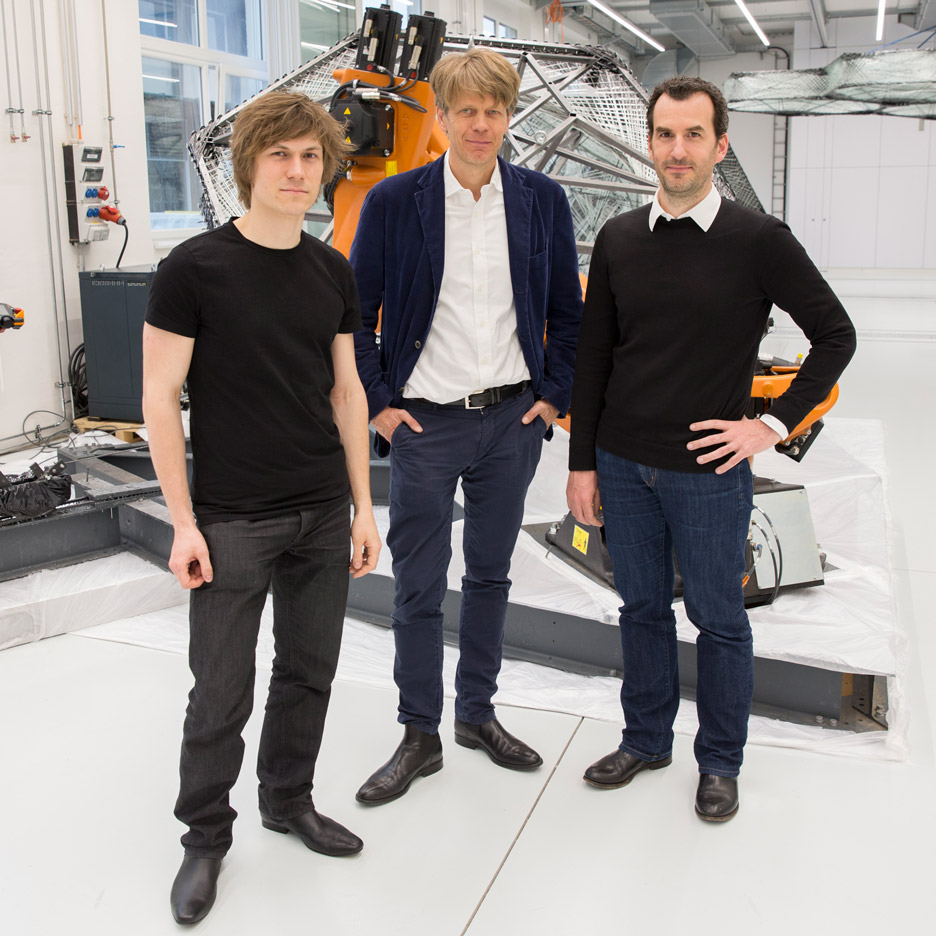
"It's a very new technology so nobody has picked it up and commercialised it," he told Dezeen during a recent visit to the school.
"We're not just looking at a gradual evolution of how things are made," he added. "It's a pretty dramatic shift, a kind of fourth industrial revolution."
Menges believes the full possibilities of carbon fibre in construction are still yet to be revealed, and claims that robotic fabrication could help unlock its potential.
"The genuine possibilities inherent in the material are not fully tapped into," he said. "We haven't left that phase where these new materials are mimicking old materials."
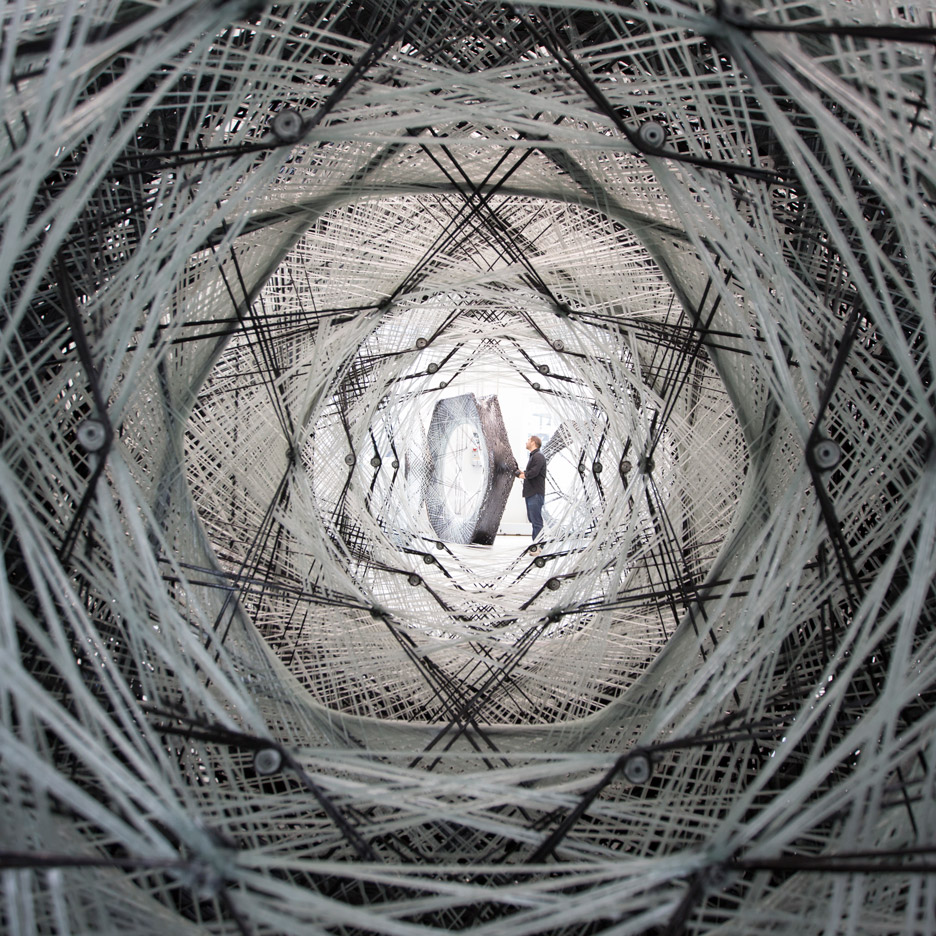
Menges has spent the last few years working with engineer Jan Knippers exploring whether structures found in nature could set a precedent for future architecture. They are currently working with another engineer, Thomas Auer, and architect Moritz Dörstelmann on a robotically fabricated carbon-fibre pavilion for London's V&A museum.
One of the techniques they have developed is a form of robotic weaving that leaves fibres exposed rather than embedding them in a host material – a system they believe could make it possible to build carbon-fibre structures large and strong enough to form roofs for stadiums.
"This could find an application in architecture tomorrow," said Menges.
The primary hurdle, he said, is the development of the computer software needed to control the robotic construction.
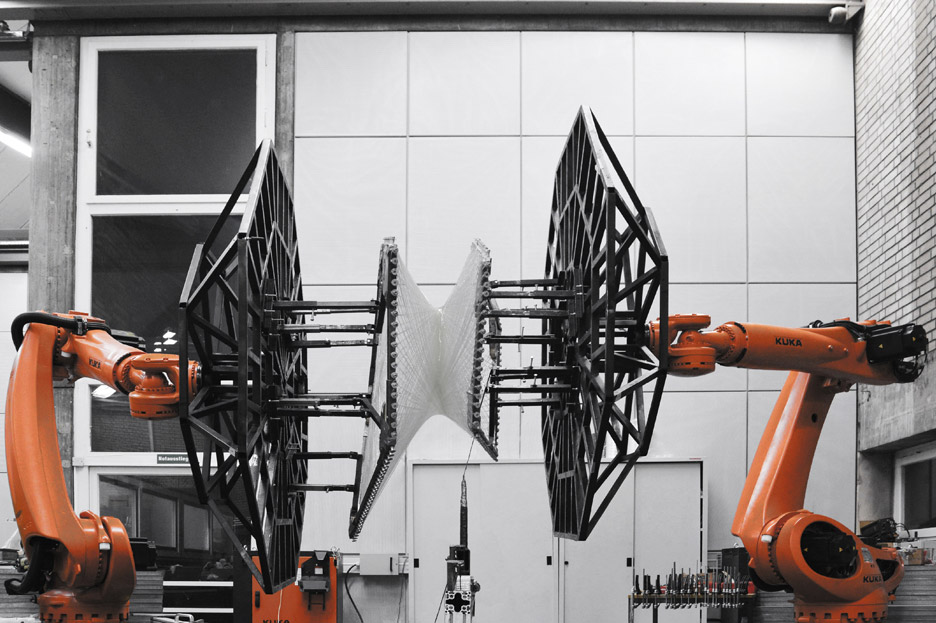
Carbon fibre is part of a family of fibre-reinforced composites which, alongside fibre cement and glass fibre, are among the newest and most revolutionary materials in construction.
The material first rose into prominence in the 1960s, with its high tensile strength making it an ideal candidate for both the furniture and transport industries. It has become more widely used in recent years, and the first mass-produced carbon-fibre car and plane –the BMW i3 and the Boeing 787 Dreamliner – have recently been introduced.
For the most part, carbon-fibre components are formed in moulds and are designed to mimic more traditional materials. But by applying this old technique to a relatively new group of materials, the construction industry is missing out the chance to fully explore it as a fibrous material, according to Menges.
"[Fibrous materials] are still not used in a way that really explores the intrinsic material properties and characteristics," he said, "both in terms of the design language, but also in terms of the structural capacities that they have."
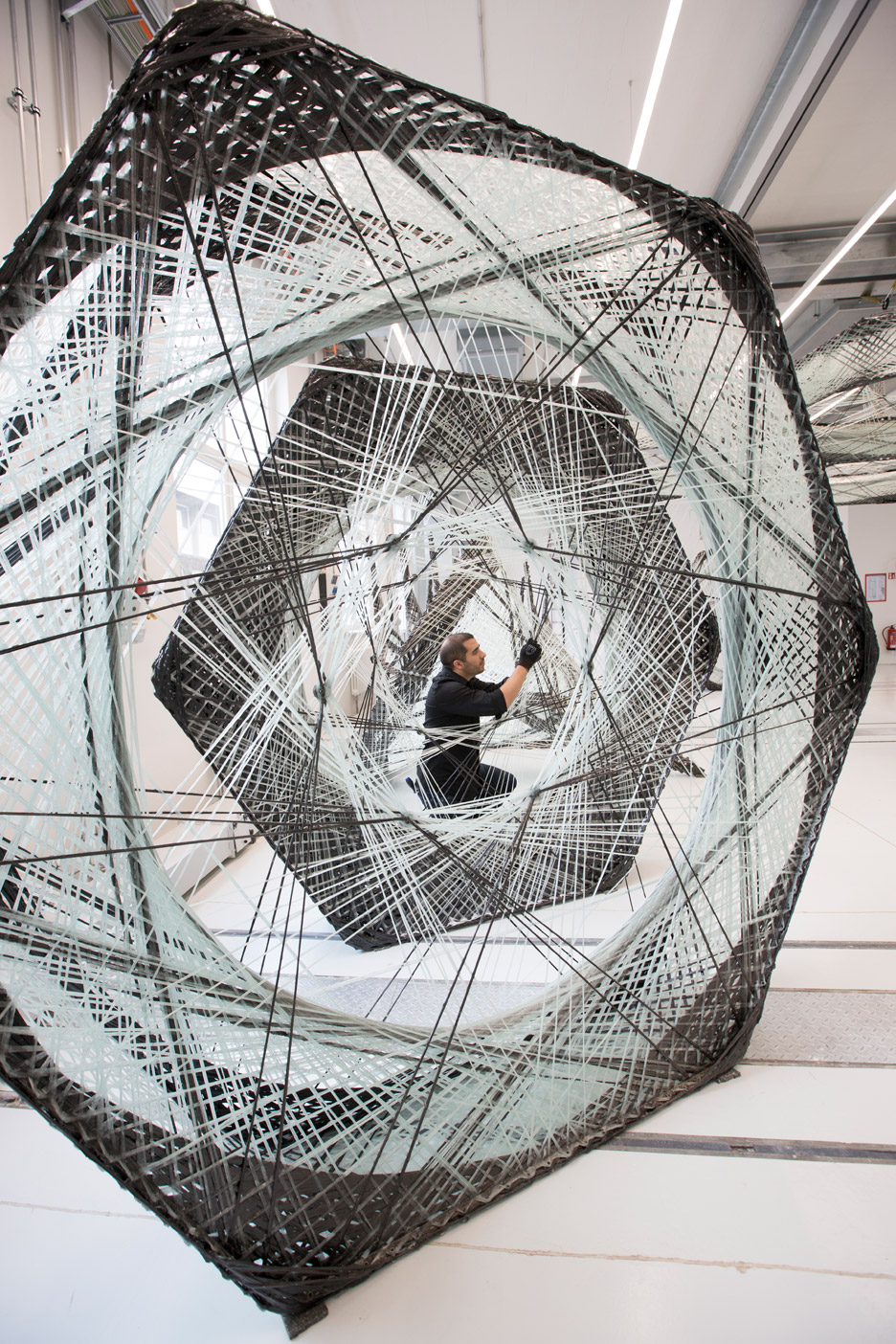
The first forays into carbon-fibre architecture, including Snøhetta's recently completed extension to SFMOMA, are copy-catting the high-gloss aesthetics of the automotive and aerospace industries, he said.
According to Menges, the use of moulds is both prohibitively expensive – encouraging serial production and stifling further experimentation – and wasteful for the production of one-off buildings.
Unlike the robots used by the car industry, which are taught to carry out and repeat one task, the team in Stuttgart is developing software to make each movement of the robotic arm more intelligent, resulting in tailor-made structures.
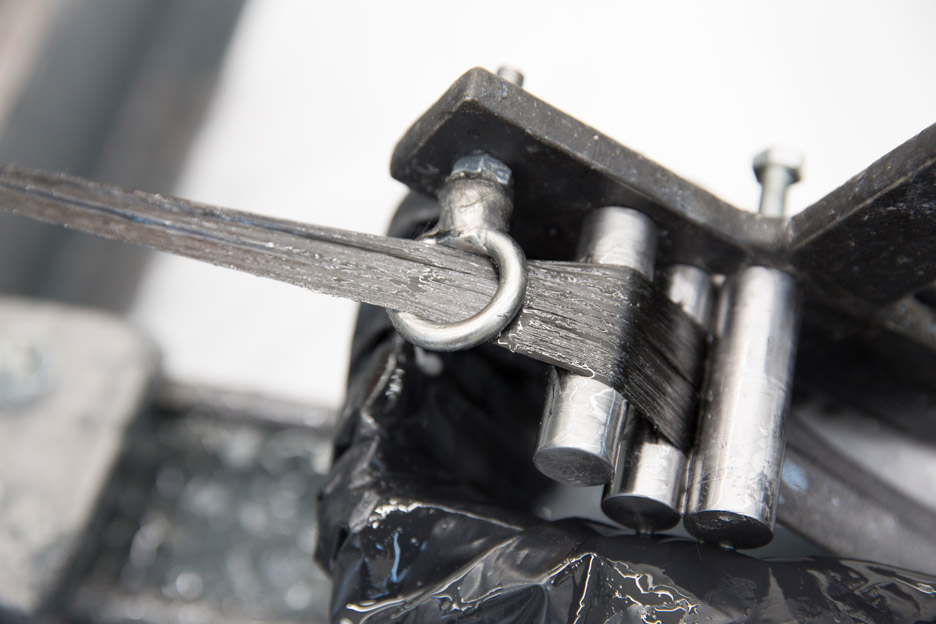
Menges and Knippers have explored the possibilities of numerous materials as part of their ongoing material research, which is informed by biological structures like the shell of a sea urchin or the wings of the beetle.
Some of the results have been revealed through the school's annual pavilion series, which they produce with students using computational design, simulation and fabrication processes.
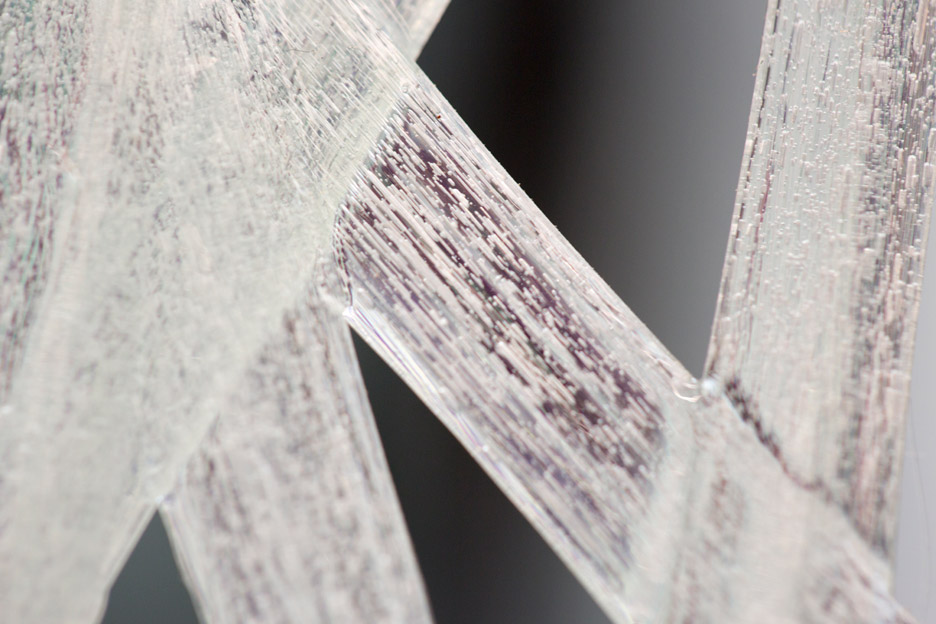
The Stuttgart team's carbon-fibre pavilion for the V&A courtyard in London will be based on a earlier investigation into the webs of water spiders.
Called the Elytra Filament Pavilion, it will be erected as part of the museum's engineering season and is currently being built by a robot in their warehouse space behind an old Kodak factory in the city.
Lengths of carbon and glass fibre are drawn through a resin bath by the robot, and then wound around metal scaffolding. The resin-coated structures are then cured in a giant oven before being detached from their framework to form stand-alone pieces.
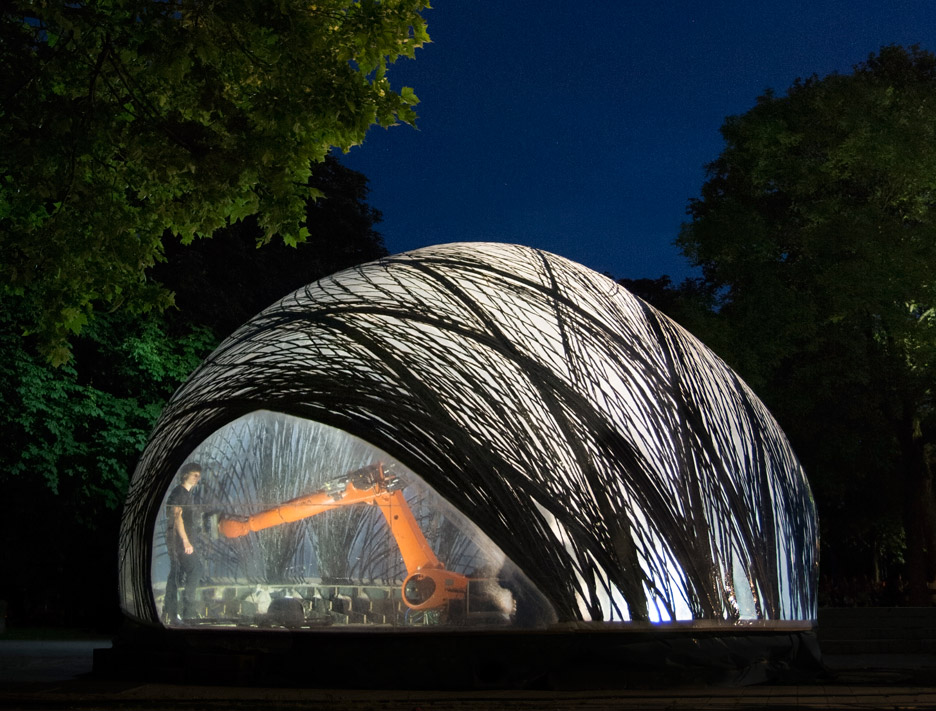
Other past projects by the team include a pavilion constructed from 30,000 spiky components and a structure made from a bioplastic containing over 90 percent renewable materials.
The work builds on the research carried out by Frei Otto, the late German architect and engineer, who was known for his pioneering development of tensile and membrane structures, and who worked at the same institute.
Images courtesy of the University of Stuttgart and the V&A.